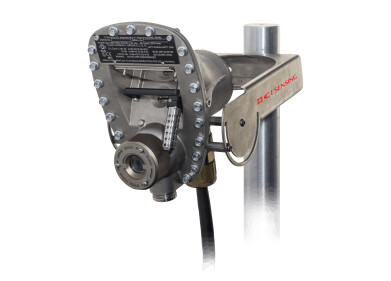Air Monitoring
The future of air quality monitoring networks
Feb 02 2021
In the United States, the legacy infrastructure traditionally used to measure and manage air quality is timeworn and costly to maintain. The U.S. Government Accountability Office (GAO), for example, released a report in December 2020 highlighting that US air quality monitoring networks have fallen into disrepair due to aging equipment and budgetary constraints.
The U.S. is not the only country challenged to maintain funding for air quality monitoring infrastructure - government-funded air pollution initiatives are chronically underfunded globally. Grants from multilateral agencies, such as the World Bank and the United Nations Development Programme, remain critical to building air quality monitoring efforts in the many countries where no funding exists. As government agencies across the world face budget cuts due to the economic impacts of COVID-19 in the coming years, air quality leaders will need to find ways to stretch their monitoring budgets.
“Air pollution and climate change conditions are reaching criticality worldwide at the same time that environmental agencies face budget constraints, and traditional air sensing technologies have reached a crossroads,” GAO also said. “Given the current conditions, we believe that the future of air quality monitoring networks, Air Quality Monitoring 2.0, will consist of installing low-cost and highly-scalable sensors to complement existing regulatory monitoring equipment and fill in the spatial and temporal gaps that exist with the traditional networks. These technologically advanced sensors are significantly less expensive than traditional technologies and will be key to making air quality monitoring globally accessible by removing the steep up-front and operational costs that come with traditional monitoring networks.”
Helping governments in more than 85 cities across more than 50 countries adopt Air Quality Monitoring 2.0, Clarity offers a reliable, low-cost air quality management solution that is purpose-built to complement existing regulatory monitoring networks. Solar-powered and weatherproof, the Clarity Node-S weighs just 1.2 kg and measures air pollutants like fine particulate matter and nitrogen dioxide. Clarity’s monitors can be easily deployed in 10 minutes or less and link to the cloud through native cellular connectivity, allowing them to operate seamlessly with minimal maintenance in any environmental condition.
Once installed, customers have direct access to the data collected through API access and the Clarity Dashboard, an intuitive software platform that visualizes and integrates data from existing reference stations and includes advanced features like colocation analysis. The company upholds the highest standards for data and security and ensures that customers retain ownership of all data collected by their Clarity network. Clarity’s sensing-as-a-service model includes a hardware warranty and access to a dedicated customer success team of air quality experts for project and technical support.
To support other cities and government agencies looking to leverage low-cost sensors to expand air quality monitoring coverage in the face of budget cuts, Clarity released a playbook titled “Maximize Your Air Quality Budget in a Post-COVID World: A Guide to Leveraging Low-cost Sensors for Air Quality Monitoring 2.0” available via their website.
Digital Edition
AET 28.2 April/May 2024
May 2024
Business News - Teledyne Marine expands with the acquisition of Valeport - Signal partners with gas analysis experts in Korea Air Monitoring - Continuous Fine Particulate Emission Monitor...
View all digital editions
Events
Jul 10 2024 Birmingham, UK
Jul 21 2024 Cape Town, South Africa
Australasian Waste & Recycling Expo
Jul 24 2024 Sydney, Australia
Jul 30 2024 Jakarta, Indonesia
China Energy Summit & Exhibition
Jul 31 2024 Beijing, China


















